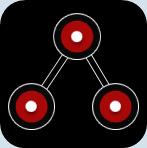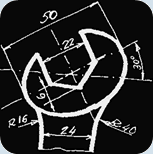 |
| Carlos Cetina's Tools
 |
 |
|
The Model-based Reconfiguration Engine (named MoRE) was developed in 2009. MoRE leverages variability models at run-time in order to achieve autonomic computing. This engine transforms Variability Models to executable
Reconfiguration Plans at run-time.
Reconfiguration plans define how a set of components that make up an
architecture dynamically cooperate to change the software configuration to a new
configuration given a set of reconfiguration actions. Furthermore,
reconfiguration plans are executed in a transactional manner to guaranty the
consistency between the Variability Model and the system state.
That is, systems make use of the
knowledge captured by variability models as if they were the policies that drive the
autonomic evolution of the system at run-time.
See more details at my Research page. |
|
|
|
 |
|
MOSKitt Feature Modeler (MFM) was released in 2008. MFM is a free open-source tool which gives support for the feature models. Feature Models are a widely used notation to describe a set of products in a product line and capture the variability which exists in every product.
The main characteristics that MFM presents in feature model manipulation include:
Notation Flexibility. The graphical notation used to represent the elements in a model can be changed dynamically.
Automatic Tree Layout. MFM can reorganize the elements of a model in a graphical tree, in bottom elements bottom are the leaves of the tree, top element is the root and the rest of the elements are ordered by levels.
Feature Explosion. Any feature can be exploded in another feature model. In addition, the graphical representation of exploded features changes to provide information about its submodel population.
Interoperability with FMP. MFM models can be transformed into Antkiewicz and Czarnecki's Feature Modeling tool.
See more details at MFM Website. This tools was presented in the Spanish edition of the Eclipse Day, see the slides. |
| |
|
|
 |
|
The PervML Generative Tool (PervGT) was released in 2006. This tool supports a model driven method proposed for the development of pervasive services in ubiquitous environments. The tool, which is based on the Eclipse platform, allows pervasive systems developers the creation of graphical diagrams and the automatic translation of these diagrams into the final implementation code using a transformation engine. For that, PervGT provides to the developers support to Graphical Model Edition and Code Generation as follows:
Graphical Model Edition. PervGT tool provides a graphical editor for each one of the different models that are proposed in the Pervasive Modelling Language.
Code generation. Models are used as input to a transformation engine which produces as output pervasive system code.
See more details at PervML Website. |
|
|
|
|

